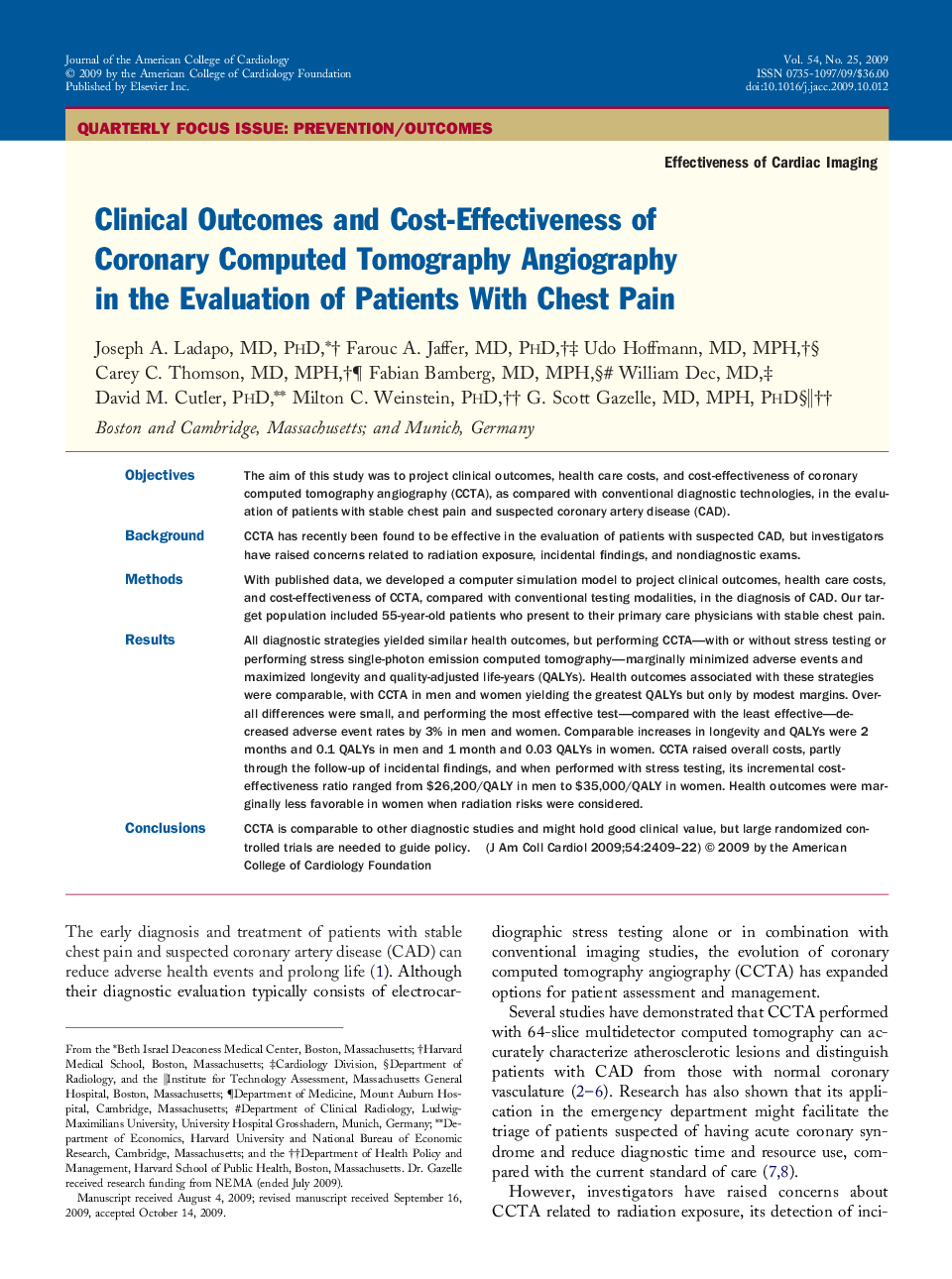| Article ID | Journal | Published Year | Pages | File Type |
|---|---|---|---|---|
| 2949050 | Journal of the American College of Cardiology | 2009 | 14 Pages |
ObjectivesThe aim of this study was to project clinical outcomes, health care costs, and cost-effectiveness of coronary computed tomography angiography (CCTA), as compared with conventional diagnostic technologies, in the evaluation of patients with stable chest pain and suspected coronary artery disease (CAD).BackgroundCCTA has recently been found to be effective in the evaluation of patients with suspected CAD, but investigators have raised concerns related to radiation exposure, incidental findings, and nondiagnostic exams.MethodsWith published data, we developed a computer simulation model to project clinical outcomes, health care costs, and cost-effectiveness of CCTA, compared with conventional testing modalities, in the diagnosis of CAD. Our target population included 55-year-old patients who present to their primary care physicians with stable chest pain.ResultsAll diagnostic strategies yielded similar health outcomes, but performing CCTA—with or without stress testing or performing stress single-photon emission computed tomography—marginally minimized adverse events and maximized longevity and quality-adjusted life-years (QALYs). Health outcomes associated with these strategies were comparable, with CCTA in men and women yielding the greatest QALYs but only by modest margins. Overall differences were small, and performing the most effective test—compared with the least effective—decreased adverse event rates by 3% in men and women. Comparable increases in longevity and QALYs were 2 months and 0.1 QALYs in men and 1 month and 0.03 QALYs in women. CCTA raised overall costs, partly through the follow-up of incidental findings, and when performed with stress testing, its incremental cost-effectiveness ratio ranged from $26,200/QALY in men to $35,000/QALY in women. Health outcomes were marginally less favorable in women when radiation risks were considered.ConclusionsCCTA is comparable to other diagnostic studies and might hold good clinical value, but large randomized controlled trials are needed to guide policy.
